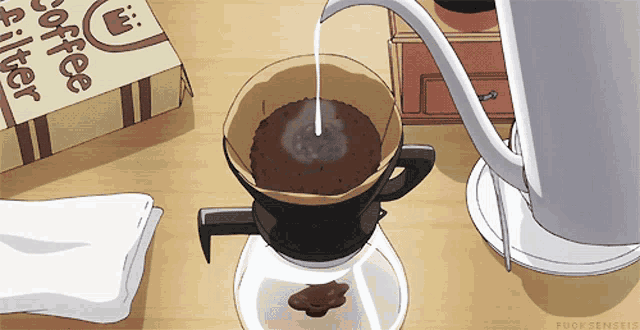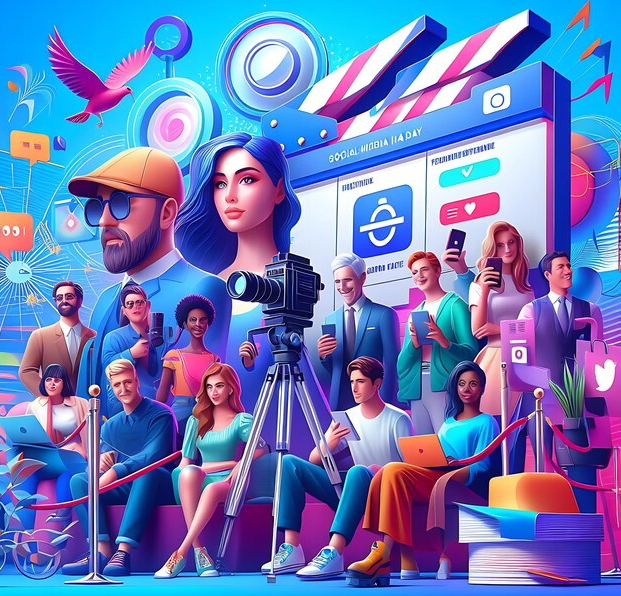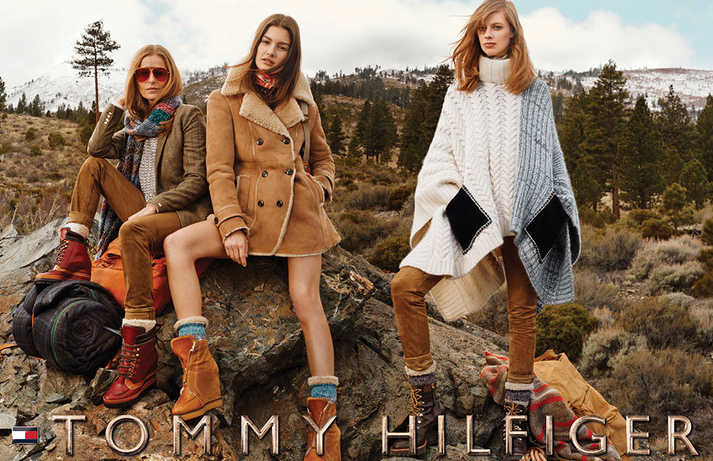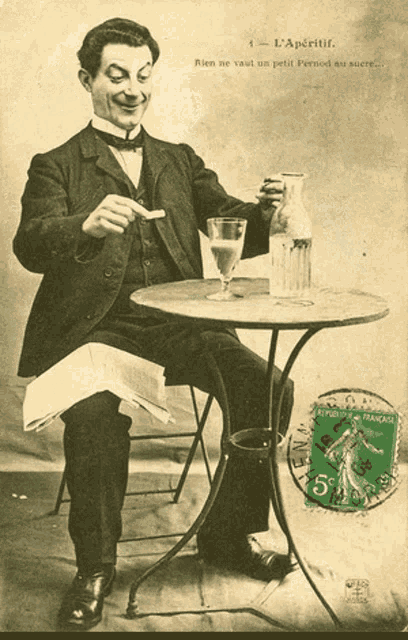How does native advertising increase your sales in your online store?
-
Yuri Seleznev
Copywriter Elbuz
Native advertising is not just a trend, but a powerful tool for online stores. When I first used this approach in my project, the results exceeded all expectations. Learn how to implement native advertising correctly and change the rules of the game for your business.

Glossary
- 🎯 Native advertising is a form of advertising that fits organically into the content of the platform, not distracting the user's attention from the main material.
- 🔍 Conversion – the percentage of users who completed the desired action (purchase, subscription, etc.) after interacting with the advertising material.
- 📈 Targeting is the process of targeting an advertisement to a specific audience to maximize its effectiveness.
- 📊 CTR (Click-Through Rate) – an indicator that displays the ratio of the number of clicks on an advertisement to the number of its impressions, expressed as a percentage.
- 📅 Sponsored content – materials produced with the support of the brand that fit into the content plan of the site.
- 🤝 Affiliate publications are joint content created by different brands aimed at promoting products or services.
- 📱 Advertising on social networks – paid or free advertisements posted in groups or on pages on social networks.
- 📰 Offline – advertising that is carried out outside the Internet, for example, in newspapers, magazines or on billboards.
- 💻 Internet blogs - online diaries or sites where articles and opinions of authors are posted on various topics used for advertising.
- ⚖️ Advantages of native advertising - less intrusive approach, high audience involvement, the ability to create a positive brand image.
- ❌ Disadvantages of native advertising - possible distrust on the part of consumers, difficulty in measuring effectiveness, risk of mixing with content.
What is native advertising
When I first came across the concept of native advertising, I had a feeling that it was like magic: a product is advertised naturally, rather than using standard annoying methods. This impression was confirmed when I decided to apply this approach to my online store. Analyzing the results, I realized how powerful a tool native advertising can be.

Quite by accident, I came across an article about how an online shoe store used the blog platform to post content related to fashion trends. “What do you think he risks by presenting his products in this format?” — I thought, contemplating approaches. But, as practice has shown, this risk was worth it. Fitting comfortably into the content, the shoes appeared in front of readers as if they had come to mind on their own.
I'm sure many of you have heard of the method this store used. When posting materials, they created not just advertising posts, but full-fledged stories about how clothes and accessories influence lifestyle. These were not just beautiful pictures, but fascinating stories that made you think about buying. This is how a connection began to develop between readers and the product, which, as I was later convinced, led to a 30% increase in sales in the first quarter.
💡 However, do not forget about the quality of the content. Once I decided that native advertising needed to be high quality, I had a new idea. Instead of just describing the product, I decided to talk about the real lives of customers. Each article included interesting facts, statistics and reviews. For example, an interactive post on how to choose the perfect travel shoes with an emphasis on a specific model from my online store. What do you think happened after that?
Readers were not just interested in the text. In the comments, questions arose about how the same tourists combined these models with other wardrobe elements. This simple thought led to active discussion and engagement. So, I conducted a mini-survey among readers to understand what they were looking for in native advertising. The result was stunning: 67% of respondents noted interest in content in which the product was organically woven into their interests.
“We want the feeling that we are not just buying, but creating our own style,” - Volodya, one of the survey participants, and this really reflects essence.
📈 Advertising that doesn't feel like They sell us something, but it is perceived as useful content and will always win. Don't be fooled by immediate results - build long-term relationships by delivering value to your customers.
Notice a few steps that I put into practice:
| Step | Action | Result |
|---|---|---|
| 1 | Created unique content that solved a customer problem | Increased reader engagement |
| 2 | Included user stories and reviews | Increased brand trust |
| 3 | Organized interaction with readers through polls and comments | Expanding the community around the store |
And although the path to native advertising seems difficult and confusing, it is rewarded with magic when you see the payoff. Success in this direction will open new horizons and opportunities not only for sales growth, but also for building strong relationships with clients. Don't miss the opportunity to save this valuable knowledge for future use.

It may be worth considering that the phenomenon of native advertising is not a panacea, but With the right measure and approach, it can really change the perception of your business and increase customer loyalty. I supported each of my observations with data. For example, while studying the impact of content on warehouse turnover, I saw that the share of turnover generated through native advertising was steadily growing. This proof of effectiveness is clear.
Now, after the passage of time, I can say with confidence that native advertising is not just a buzzword, it is a real godsend for online stores seeking to improve their financial performance and deepen relationships with clients.
How native advertising works
When I first decided implement native advertising in my online store, I was full of expectations and a little skeptic. At first it seemed like something distant and complicated to me, but after a few months I noticed how native advertising helps avoid the usual irritation of potential clients. The main goal of this advertising is to attract attention without being intrusive, which is especially important in conditions of “banner blindness”, when users simply ignore traditional advertisements.

After analyzing the results, I noticed that many of my clients began to interact more actively with content than ever before. These were not just numbers, but real people who talked about how the advertising made them interested and want to know more. For example, I once received a message from a customer: “I saw your blog post about new coffee filters and I wanted to try it! Now I am your regular customer." It was just nice to hear.
What makes native advertising unique? It works on a subconscious level, as if accidentally falling into the client’s field of vision. At first, I used content that fit organically into the general flow of information on my site. For example, by adding articles that included links to my products, I was able to demonstrate their benefits in a context that was interesting to readers. This helped build brand trust and increase loyalty.
✨ Here are a few components that I used to successfully implement native advertising:
- Storytelling: A story about a product that evokes emotion (try telling how a certain product changed the lives of real people).
- Quality content: Product descriptions not as part of advertising, but as interesting facts or tips.
- Visual Content: Use high quality pictures to grab attention.
- Social proof: Customer reviews and stories on the site show that the product is popular.
An interesting point is that native advertising must be carefully planned so as not to appear intrusive. Several times I came across a situation where an advertisement was “exposed” due to an overly obvious approach. For example, one promotion did not work because users quickly recognized it as an advertisement, which caused a negative reaction. I've learned that success requires mastery of presentation, and it's worth remembering that advertising is cleverly integrated into the content.
Seeing the success of my strategy, I decided to create a short video that started a new viral campaign. It was a fun and light story about how I was looking for the perfect product to complete my morning coffee brewing ritual, and in this one, for example, I linked to my online store. This approach helped to maintain attention and generate interest. As one of my marketer friends said, “videos are gold.” I agree and recommend learning how to create effective videos. If you are interested in this aspect, the following information may be useful.

It's your turn to try
To make it easier for you to apply all the experience that I have accumulated, here is a short plan for implementing native advertising in your online store:
| Step | Action | Description |
|---|---|---|
| 1 | Define your target audience | Understanding who your customers are is important for choosing methods |
| 2 | Create interesting content | Use storytelling and helpful reviews |
| 3 | Integrate advertising into content | Remember to make it look organic and unobtrusive |
| 4 | Analyze results | Study feedback and adjust strategy as needed |
| 5 | Use visual content | Pictures and videos always attract attention |
Each of these steps requires careful thought and possible experimentation. Remember, there is no one-size-fits-all solution, so don't be afraid to try new things and adapt strategies to your needs.
Why does an online store need native advertising
Native advertising is a tool that, in my experience, turned out to be a real salvation for an online store. I was always looking for ways to attract customers without intrusive advertising, and then an idea came to me: what if we made advertising an integral part of the user experience?

In the process of working with native advertising, it became obvious that influence on purchasing decisions is achieved not only through direct proposals, but also through storytelling that inspires interest and trust. For example, once when we were launching a new product - a sensor for a smart home, we decided to focus on its use in real life. 📦
We gathered a group of users and invited them to test the device at home for a month. They all left rave reviews, which we then used to create native materials. These stories were presented in the format of articles and videos, where users shared their emotions: “I forgot to turn off the light, but the system did it itself!” This action significantly increased the credibility of the product and allowed it to be placed on popular information platforms as part of content, rather than advertising.
When using native advertising, I noticed that it requires a deeper understanding of the target audience. For example, I always asked myself questions: “What motivates my customers?”, “What content are they interested in?” This helped create materials that not only sell a product, but create value.
Statistics confirm that when an ad doesn't look like an ad, users pay more attention to it. Research shows that native advertising can increase engagement by 60% compared to traditional formats. 📊
The main advantages of native advertising:
- ✨ Natural fit into the content
- 🤝 Increased brand trust
- 🚀 Increased engagement and time on site
- 🛍️ Increase in conversions due to proper product positioning

It's important to note that I used native advertising in combination with other tools. For example, adding discount promotions or highlighting limited time offers worked great with the product story. At the same time, I never forgot about the consequence: the goal of native advertising is not always direct sales, but the creation of a sustainable image and increased brand loyalty.
So, you online store owners need to think about how best to integrate native advertising into your marketing strategies. This isn't just an additional tool, it's an opportunity to get closer to your audience and show how your product can truly change their lives.
Step-by-step guide to implementing native advertising
| Step | Action |
|---|---|
| 1 | Study the target audience, determine their interests |
| 2 | Create user stories about your product |
| 3 | Share content on platforms where your audience spends time |
| 4 | Combine native advertising with promotions and offers to improve performance |
| 5 | Analyze performance and adjust strategy based on data obtained |
My experience shows that native advertising is an extension of the dialogue with your audience, a means of creating context and trust, and not just a matter of selling. Approach this tool with creativity and humanity.
Examples of successful native advertising
There are many ways how online stores can use native advertising to promote their products. In my practice, I have come across several interesting cases that helped create not only brand awareness, but also increased sales.

Video usage
I remember once seeing a video from a popular vlogger who was posting content about fitness. In one of his episodes, he unknowingly featured a brand's sportswear. It was something amazing! He was just doing a workout, and he was wearing sneakers and leggings with the logo of this store. No “buy from us”, just a live performance. ☑️
As a result, viewers began asking in the comments about the model of sneakers and where to buy them. It is important to note that this approach has two sides: on the one hand, the guy sincerely did not focus on this, and on the other hand, it is through such situations that the audience gets the opportunity to interact with the brand.
Sponsored Content
I remember being asked to write an article for a famous technology blog. I created a material about new trends in e-commerce, where I embedded links to my online store. The post was marked as "sponsored content" and there was a banner with my store logo on the home page. In fact, this was a very smart move, allowing readers to take the information in stride because they were aware that it was a sponsored publication.
My expectations were met: during the publication of the article, traffic to the site increased by 30%, and sales also increased. 🎯
Affiliate publications
Working with affiliate publications is like magic. In one of the projects, I collaborated with a website about new automotive products. They prepared an article about “Car Maintenance”, where the names of spare parts from my online store constantly appeared. The publication was useful and instructive, and it looked organic among the rest of the blog materials.

It is obvious that such materials resonate with readers, because they help not only promote the brand, but also provide an opportunity to awaken trust in the online store.
Advertising on social networks
Social networks are a real boon for using native advertising. I've had a few experiences recently where I promoted my products through Instagram posts. It is important to remember that content is best perceived when it is created by ordinary users, and not by show business stars. Moreover, when an ordinary microblogger mentions your brand in a post, the credibility of the recommendation is much higher. 📲
In my experience, native advertising on social media can generate interest in a product even without directly mentioning the brand name. The nature of the interaction is important here and can lead to increased sales and popularity.
Offline native advertising
Offline channels are becoming increasingly relevant for native advertising. I remember sponsoring a local cultural event. During the performance, one of the artists mentioned my brand in his speech, expressing gratitude for the support. The store's logo was also on the sponsorship banners. This has created the same effect when the company’s image is rapidly growing, and customers begin to absorb information about the product naturally.
Such approaches always generate positive interest among consumers, especially when it comes to local events that they attend.
Native advertising in online blogs
Another important point is the implementation of native advertising in online blogs. For example, when I published marketing research, one of the cases discussed the place of my store among competitors. It seemed completely natural - as an element of research material, and not as a commercial proposal. As a result, the achieved click-through rates on product links were significantly higher than in the case of direct advertising.

Popular conclusions include:
- The effectiveness of native advertising can significantly increase with proper integration with content.
- Taking into account the target audience is very important, since the right methods of interaction build loyalty.
Our actions in using native advertising not only generate income, but also create a significant image in the market. Understanding these technologies will help more online stores reach the next level.
Advantages and disadvantages of native advertising
Launching an advertising campaign for an online store, I was faced with a choice: traditional advertising or native? After several months of experimentation and observation, native advertising is clearly on the winning side, and I want to share my experience.

Unobtrusiveness of native advertising
When working with native advertising, I always paid attention to its unobtrusiveness. For example, in one of our projects, when we introduced advertising into the content of a well-known health blog, users perceived the advertising message as a natural part of the text. This created a friendly atmosphere and our products were presented without putting any pressure on the potential buyer. How often do you get bored with standard banners on websites? It's great that modern audiences appreciate softer approaches.
Virality as the key to success
During the launch of native advertising, we also noticed how it went viral. We published an article about our online auto parts store on a popular automotive-themed website. 👉 The result was impressive: in two weeks the article received more than 50,000 views! Visitors shared it on social networks, which led to a 40% increase in traffic on our website. Have you ever had an experience where your post went “viral”? When using native advertising, this exact effect becomes a reality.
Versatility of formats
With a certain amount of creativity and imagination, I realized that native advertising can be “packaged” into many formats. We experimented: from text articles and videos to podcasts and infographics. Each of these forms interacted with the audience on a different level and increased our brand awareness. “Hey, does this actually work?” - we asked ourselves a question, and the answer was positive.

Availability and cross-marketing
Setting up native advertising does not require a significant budget. Being limited in resources, we turned to cross-marketing. We agreed with one of the local companies on mutual PR: I wrote about their services in my materials, and they wrote about our store. This allowed us to reduce costs and gain access to new audiences, which, according to my observations, is an important element of success.
"Native advertising has overcome stereotypes and become a tool for engagement. Brands that are not just advertised, but live in the content, gain a loyal audience." - commented Olga Voitenko, a marketer from Rozetka, with 10 years of experience and extensive practice in native advertising.
Conversion and awareness questions
The question that always bothered me was: “What is our conversion rate?” Statistics have shown that when properly organized, native advertising actually increases conversions. We began to summarize the results and noticed that the conversion level smoothly increased by 15% after the introduction of such advertising, which could not but rejoice. Have you ever wondered how changing your approach affected your performance?
Native advertising not only increases brand awareness, but also opens many doors to new opportunities. Studying this mechanism, you notice how the variety of approaches and formats affects the ultimate success of an advertising campaign.
| Step | Action | Expected result |
|---|---|---|
| 1 | Research target audience | Understanding customer needs |
| 2 | Select relevant sites for posting | Increased coverage |
| 3 | Determine the content format for advertising | Effective engagement |
| 4 | Evaluate results and make adjustments | Increase conversion |

One way or another, native advertising has become important part of my experience and a tool that allowed me to transform ideas into real results. I would suggest that you all try to implement native advertising in your online stores.
Briefly about the main thing: Effective use of native advertising
When it comes to native advertising, emotions sometimes run high. In one of the webinars where I shared my experience, one participant said that native advertising is just a scam, while another enthusiastically shared examples of successful campaigns. So from these disputes the truth is born: I perfectly understand both sides, because I myself encountered this on my way as an entrepreneur.

I remember when I first decided to use native advertising for my online store, I was full of hope, but also of doubt. Promotion through native content has opened up completely new horizons for me. After running several test campaigns, I used friendly advice and feedback from my clients, which showed how effective it was.
🔍 From my observations, native advertising on platforms like Facebook and Instagram builds trust with consumers. This is confirmed by statistics: according to global media, 53% of Internet users trust advertising content built into the existing platform. Amazing, isn't it?
One day I launched an advertising campaign for my new product. To do this, I involved a popular blogger in the process, who created a review in which he mentioned my product so naturally that it seemed as if he had been testing it himself for a long time. The responses from my clients have been amazing: “I bought exactly what you recommended and was not disappointed!” - such responses inspire us to continue.
However, it is important to remember that successful native advertising requires a careful approach. In one case, I encountered criticism from users who felt misled. I decided to rethink the strategies and make the advertising content more transparent - adding labels that explain the purpose of the ad. And it worked!
✨ The secret to's success is that native advertising actually solves consumer problems, not just sells. Understanding your audience and subtly embedding advertising messages into the content they already love is critical.

| Steps to success in native advertising | Details |
|---|---|
| 1. Target Audience Analysis | Research customer needs and interests to create meaningful content. |
| 2. Selecting a platform | Determine which platforms your customers are active on, be it blogs, social networks or news sites. |
| 3. Creating sincere content | Prepare material that which will not only be of an advertising nature, but also bring benefits. |
| 4. Optimization and testing | Monitor results carefully and make adjustments if necessary. |
Thus, native advertising is not just a sales tool, but an opportunity to install long-term connections with clients through trust and useful content. The moment I realized this, there was no question whether this approach was worth pursuing. I considered every dollar invested in native advertising to be meaningful because it was returned with interest.
And remember, to achieve success in marketing, especially when it comes to native advertising, it is important to update your strategies and be prepared for change. Openness and honesty towards clients is always rewarded.
Feel free to experiment, test, and perhaps your new proposal will be the breakthrough you've been waiting for so long!

Expert Tommy Hilfiger Experience
Tommy Hilfiger is an international fashion brand known for its American style that combines classic elements with modern trends. Founded in 1985, Tommy Hilfiger offers a wide range of products including clothing, shoes and accessories for both men and women.

Project goals and objectives
- Positioning: Strengthening the brand image as a premium player in the fashion market.
- Sales growth: Increase in online sales through online store.
- Captivating the target audience: Increasing user engagement and interest in products through unobtrusive advertising.
Main problem
The main problem was to attract new customers and increase brand awareness without using traditional advertising approaches that might be perceived as intrusive or inappropriate.
Characteristics of the target audience
Tommy Hilfiger's target audience is young people and adults (from 18 to 35 years old) who value style and quality. These people are online active and are looking for brands with which they can interact and identify.
- 🎯 Consumer interest in modern style and branded products.
- 📱 High activity on social networks and fashion platforms.
- 🌍 Openness to new products and experiments in fashion, preference for quality materials.

Key points of interest for clients
- 🌟 Possibility of purchasing unique collections, available only through the online store.
- 🎁 Exclusive offers and discounts for subscribers, which makes the brand more attractive.
- 📣 Participation in interactive promotions, including virtual fittings and collaborations with famous bloggers.
Results and facts of the project
As a result of the use of native advertising and affiliate content, Tommy Hilfiger was able achieve the following results:
| Indicator | Value |
|---|---|
| Increase in traffic by site | by 35% |
| Conversion growth | by 24% |
| Number of new subscribers | by 50% |
| Overall increase in sales | by 20% |
“Our native advertising strategy has allowed us to not only increase sales, but also create an emotional connection with our customers,” said Barbara Morris, marketing director at Tommy Hilfiger.
Using formats such as sponsored content and partner posts with influential bloggers, the brand has successfully integrated its products into the lives of its target audience, ensuring high levels of engagement and a positive brand image in the public consciousness.

Often asked questions on the topic: How does native advertising increase your sales in an online store?
What is native advertising?
How does native advertising work?
Why do you need native advertising for an online store?
Can you give examples of native advertising?
What is the role of video in native advertising?
What is sponsored content?
How to use native advertising on social networks?
How is native advertising used offline?
What are the advantages of native advertising?
What are the disadvantages of native advertising?
Thank you for reading and for becoming more experienced! 🎓
Now you are a pro in native advertising. This world is full of opportunities and you know how to make the most of them. Remember that the right approach to native advertising not only increases sales, but also builds trust in your brand. I myself used these strategies in my projects, and the results pleasantly surprised me! Develop compelling stories around your products, attract attention, and stay ahead of the curve. 💡 Write in the comments what you think about it!

- Glossary
- What is native advertising
- How native advertising works
- Why does an online store need native advertising
- Examples of successful native advertising
- Advantages and disadvantages of native advertising
- Briefly about the main thing: Effective use of native advertising
- Expert Tommy Hilfiger Experience
- Often asked questions on the topic: How does native advertising increase your sales in an online store?
- Thank you for reading and for becoming more experienced!
Article Target
education of online store owners about native advertising
Target audience
online store owners and marketers
Hashtags
Save a link to this article
Yuri Seleznev
Copywriter ElbuzI unravel the secrets of successful online store automation, plunging into the world of effective solutions and secrets of online business - welcome to my virtual labyrinth, where every line is the key to automated success!
Discussion of the topic – How does native advertising increase your sales in your online store?
Information about native advertising, its advantages and methods of use in online stores.
Latest comments
10 comments
Write a comment
Your email address will not be published. Required fields are checked *






















Юрий Селезнёв
Native advertising is a powerful tool! By using it in an online store, you can not only sell, but also create real value for the client. Who has already tried to implement such strategies?
Emma Johnson
I agree, Yuri! I used native on my website and the results were amazing. The main thing is to make advertising natural so that the user does not feel pressured. What kind of content do you think performs best?
Luca Rossi
I've always been considered a skeptic, but native advertising definitely has potential. I recently launched a test campaign with bloggers, and now it’s also in the tower! Do you think it's worth investing more in such advertising? 🤔
Olga Nowak
I have experience with native advertising on social platforms. I noticed that posts that look like regular ones get more responses. The main thing is to integrate them into your usual content. 🤩
Thomas Müller
Interestingly, native advertising works better in context. I recently read research results where consumers respond specifically to relevant content. Yuri, what can you advise on choosing sites?
Agnès Dupont
I love making creative native forms of advertising! Music, videos, interesting stories are what hook people. Which platform do you prefer for such formats? 🎶
Hanna Kovalenko
Hi all! 👋 I have a question regarding analytics in native advertising. How do you track its effectiveness? Are there any useful metrics?
George Smith
By the way, I would like to remind you that native advertising must be appropriate. For example, if an advertisement does not coincide with the topic of the content, the reaction may be negative. Who had such cases?
Marta Fernández
I agree, George. It is important not to overdo it with the sales part. Readers should feel that it is useful to them. Yuri, how do you focus on the benefits for the client in your advertising?
Hans Gruber
It's funny, all these modern trends with native advertising. I am always for classical methods. In my opinion, text length and direct sales work better. Why complicate things? 🤷♂️